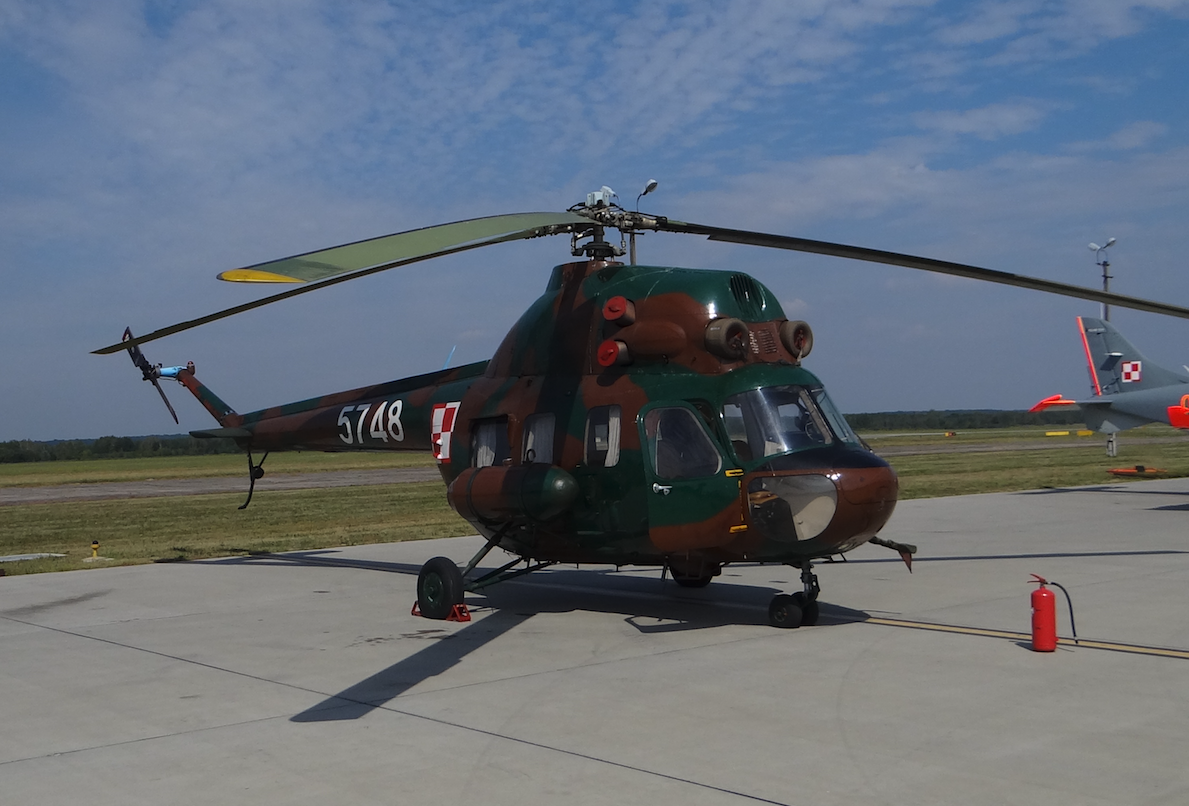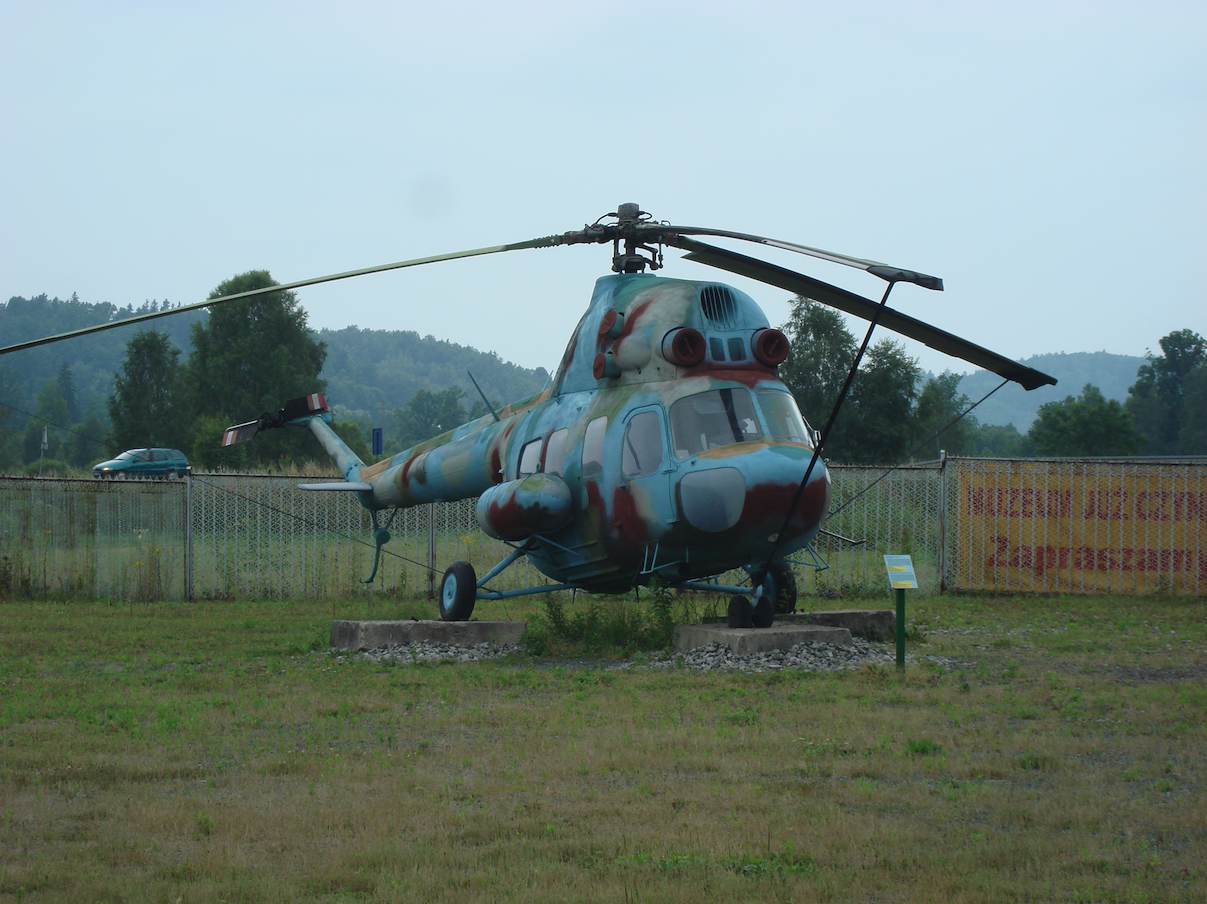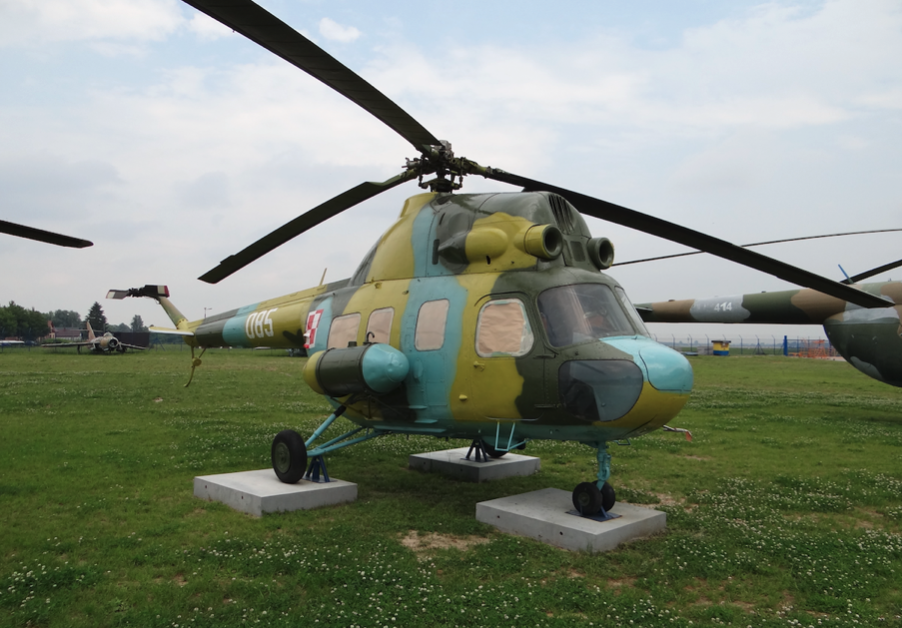Kraków 2018-01-04
193a Section 1965-08-26
PZL WSK Świdnik Mi-2
Poland
History
History Mi-2.
The Mil Mi-2 helicopter is one of the most recognizable helicopters in the world. In the NATO code, the Mi-2 was called Hoplite. (Hoplite is a heavy infantry soldier in ancient Greece from the 7th to 4th centuries BC.) The helicopter also received several dialect names, including the most popular Kettle. It was designed in the CCCP in the office of Mikhail Mil. The helicopter turned out to be successful and a decision was made to mass-produce it. However, the CCCP economy was inefficient and the armaments plants were burdened with more urgent production. That is why it was decided to locate the production of the Mi-2 in WSK PZL Świdnik. The decision was favored by Świdnik’s experience in the production of SM-1 and SM-2 helicopters. There was also another benefit to the communists; It was possible to significantly reduce Polish research and development works on domestic structures. In effect; each Mi-2 was built in Świdnik. In 1963, final decisions were made and a Mi-2 helicopter license was purchased. The Russians did not agree to name the machine SM-3, which was intended for it in Poland.
In 1964, WSK PZL Świdnik started the production of Mi-2 helicopters from parts supplied by CCCP. In 1965, the first completely Polish Mi-2 rolled off the assembly line. In total, about 5,400 Mi-2 helicopters of various variants were built. Originally, the helicopter was designed as a civilian vehicle. But in Świdnik, several variants were developed for the army, and they were mainly produced and used by the Polish Army and other countries. Although the design of the Mi-2 is already obsolete, it is still (2018) used by the military and civilian services of many countries.
The reason for the creation of the new helicopter was the development of a new turbine engine, designated GTD-350. The Mi-2 helicopter was not the first CCCP helicopter with this type of drive. The first was the Mil Mi-6, one of the largest helicopters in the world. Contrary to popular belief, the Mi-2 helicopter was not designed as a light helicopter. After all, it was supposed to take up to 9 people on board. The light helicopter at that time was the Mil Mi-1, for 3-4 people, produced in Poland until 1965, and in the CCCP until 1970. The fact that after some time the Mi-2 displaced the Mi-1 from use was a result of its operational advantages. In addition, its twin-engine drive significantly increased safety during the flight. The development of the Mil Mi-2 helicopter was more of an experiment than a specific goal. Because turbine-powered helicopters were a big novelty, and all companies building this type of aircraft started work in this direction.
Work on the Mil Mi-2 was started in 1959. In January 1961, a model of the helicopter was approved. In February 1961, the documentation for the construction of the prototype was ready. The first flight of the prototype took place on September 22, 1961.
Written by Karol Placha Hetman
Kraków 2018-01-04
193a Section 1965-08-26
PZL WSK Świdnik Mi-2
Poland
Construction PZL Mi-2
The Mi-2 helicopter is a twin-engine machine in a classic layout with a three-blade main rotor and a two-blade tail rotor. The fuselage is made entirely of metal, with a half-shell structure.
The helicopter cabin comes in various configurations. In the front there is a central console with a dashboard of pilot and navigational instruments. The pilot is in the front left side. His armchair is adapted to take a seat-type parachute. However, usually an upholstered thick seat is placed in the bowl. The seat is equipped with four-point seat belts. If the helicopter is equipped with dual controls, the right-hand seat is identical to the pilot’s seat. In other cases, a fixed seat with lap seat belts is installed here.
Written by Karol Placha Hetman
Kraków 2018-01-04
193a Section 1965-08-26
PZL WSK Świdnik Mi-2
Poland
Tally
PZL Mi-2.
About 5,400 PZL Mi-2 helicopters were built at WSK PZL Świdnik. By 1985, about 4,500 units had been built and by 1988 about 5,100 units.
Written by Karol Placha Hetman




